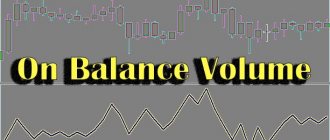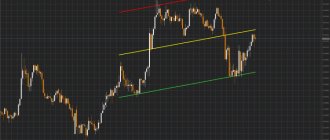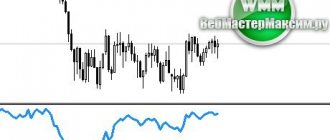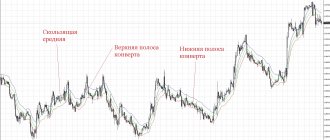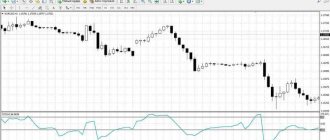This is an important guide not only about how to enable horizontal volume on tradingview but also about vertical volume and even about the volume oscillator. These indicators are important because inflation itself is a driving force of the market and relying on it is the right decision
- Vertical
- How to turn it on
- How to use
Volume Profile
Modern trends in trading in financial markets imply a rejection of conventional trading techniques in favor of strategies based on market volumes - VSA and similar ones. The instrument in question is an extremely effective assistant in the implementation of such methods, since with the help of trading volume it can clearly display on the chart the key areas of price level development.
Before trading the market volume profile, traders trading in the foreign exchange markets should take into account one very important point: Volume forex works in such an environment differently than on centralized trading platforms. Initially, various approaches based on monitoring user activity were created to work with commodity, futures, stock exchanges, and options. For a long time, this aspect of technical analysis did not concern foreign exchange markets, and only recently began to be optimized by speculators to work on them.
The peculiarity of trading in terms of volumes in the context of foreign exchange markets is determined by their specifics: Forex does not have a specific geographical location and a center through which all information about the actions carried out by users would pass. In view of this, tracking the real trading volume on Forex in full is simply impossible.
This feature determines the fact that the trading instrument in question is not suitable for stand-alone use: in order to make the most effective use of the signals it provides, it is necessary to combine it with other algorithms or systems. Many experienced users get very good results when combining it with the Aliev FX Volumes indicator, which also analyzes market activity.
Introduction: Different Market Stages
Before you learn how to spot a trend, you must understand what exactly you are looking for. Trading may seem overly complicated for beginners. Markets can move in three ways: up, down, or sideways. As a rule, these phases alternate with each other. The most difficult thing is to determine what process is happening at the moment.
As is clear from the above, trend traders try to profit from trends. There are several methods to accomplish this. No indicator will give you a 100% result in the market, since trading also includes other factors, such as risk management and the psychology of market behavior. However, some of them have passed all possible tests and remain popular among trend traders.
Below are general recommendations and promising strategies for each tool. You can use them as is or customize them to create your own personal market tactics. So, the best Forex indicators for measuring market direction are as follows.
Volume profile mt4
Directly on the working chart, the automatic indicator in question is represented by a horizontal histogram, displaying the volume indicator for each individual cost level. This histogram is constructed as follows:
- First of all, the tool takes into account the value level observed on the first time candle for the current trading session (at the very beginning);
- The next step is the accumulation of trading volume levels using a cumulative method that processes each price line quote up to the current moment.
For example, if users purchased or sold 100 trading lots at a certain price in one business day, the tool will display the corresponding transaction volume indicator at its level. It should be noted that this is how this indicator works on regular exchanges that provide information about the real financial turnover in the market. The situation is different with Forex, since its trading terminals do not allow you to perform 2 important actions:
- The first of these is to calculate the actual trading volume on each individual candle. This value is replaced by a tick indicator;
- Also, in the foreign exchange market it is impossible to determine the number of intersections between the price line and the level of a particular value quote.
That is, the tool provides only information about the number of changes in value (fluctuations in its level), but it does not allow you to observe how actively the price line tested any part of its quotes. In view of this circumstance, the user should take into account that the tool provides only an approximate picture of events occurring in the market. It is impossible to influence this due to the factors described above.
It should be noted that even information on tick volumes allows one to very accurately observe the behavior of market makers, so it cannot be called useless.
LRC
Trend lines and channels are another method of identifying market direction, and such tools also help to understand price ranges. LRC indicators are used for this.
As you can see from the above, moving averages and estimating lows and highs can be used in the early stages of a trend. Lines work best in the later stages because you need to identify at least 2 sensitive points to draw a flow line.
Professionals advise using LRC trend indicators to identify changes in already established movements. When there is a strong trend and suddenly the trend line breaks, it can signal a transition to a new one. During such ranges, the lines are ideal when looking for breakout scenarios and the price returns back to trending mode. It is also worth noting that they can be combined with moving averages, which is beneficial due to the additional characteristics.
Volume profile what it shows
By understanding the theoretical aspects of the work, a speculator will be able to effectively use instrument signals in practice. However, before analyzing them, it is worthwhile to dwell on what the market profile is. In the process of statistical market research, it was revealed that most of all stochastic processes are characterized by an average distribution. Simply put, approximately 70 percent of all tests performed by cost fall within the interval , in which M is the control fixation point and StdDev is the mean deviation.
If you replace the control point with the price quote at which the largest volume indicator was observed over a certain period of time, and designate the second variable as the price area, you can get the zones in which the greatest activity of market participants was observed. Defining and displaying such areas is the main function of the “Volume profile” indicator. Thanks to them, the user can easily find on the chart the zones with the greatest activity of market makers, trading in which can bring good results.
Displaying such periods of market activity is done by depicting rectangular contours on the chart. When analyzing, you should use only those candles and columns that are included in the range found by the indicator, marked in red. The remaining bars should simply be ignored.
High and low scores
Conventional technical analysis indicates that during an uptrend you will see higher highs on your chart as buyers are in the majority and increasing the price, and lows as buyers similarly continue to actively purchase at a reduced price. This works in a similar way during a downtrend: lows are lower when excess supply from sellers reduces demand. Prices in this case are also lower, because in all transactions the sale occurs earlier, and buyers are no longer so interested. To recognize these movements as quickly as possible, trend indicators are used.
In most cases, you should be able to determine relatively quickly whether you are in an updraft, a downdraft, or a range. The basic rule of trading for beginners is this: if you can't quickly see what's happening on the charts, it's best to refrain from making any trades until clarity is provided.
Volume profile indicator for mt4
An important aspect of working with the algorithm in question is its installation. Since it is not standard for most trading clients, the user will need to install it into their platform themselves. This procedure is performed using a very simple algorithm:
- First of all, a speculator should find this indicator on the Internet and download it to his computer. The tool is distributed absolutely free of charge: it can be easily found on thematic forums or other online resources;
- The downloaded files should be moved to the folder with custom indicators of the trading platform used by the trader for work. You can find it in the client's root directive;
- After transferring all the necessary files, you need to restart the platform itself: only after this manipulation the indicator will be displayed in the corresponding menu with tools. Using the "Navigator" you can quickly find the algorithm in the working window and move it to the working chart.
Additional examples of working with VWAP
The figure below shows the EURUSD chart with the weekly VWAP loaded.
- Entering sales (return strategy). The price came to the +6 deviation zone on Tuesday. As you can see, this same location was +6 VWAP deviation in the previous week, i.e. the upper limit of the flat. It would be possible to exit at the average VWAP if the price stayed there. And so almost immediately it went towards the -4 and -6 deviations of VWAP, where it was necessary to exit the market. Stop for the previous week's high;
- Entering purchases (return strategy). The pair stands at -4 VWAP deviation until Thursday. This is also a -2 deviation of the previous week's VWAP. Stop below the local minimum. Profit in the area of the average or +4/+6 deviation of VWAP;
- Entering purchases (trend strategy). The currency pair has been at the average weekly VWAP for half of Friday after a rollback from the +6 deviation of VWAP. The reluctance to go lower indicates the continuation of upward dynamics. Output at +6 deviation;
- Entering sales (trend strategy). The market opened on a buy on Monday, but sharply reverses sentiment and moves below the new VWAP, indicating selling potential. In this case, a return to the average occurs during the American session, which allows you to enter an ideal trade;
- Entering purchases (return strategy). The market closes Monday around last week's average VWAP. The purchase is dangerous, but we should expect a return to the average VWAP of the current period, because very little volume was collected. This is what happens;
- Entering sales (trend strategy). Selling from average weekly VWAP on Tuesday. Output at -6 deviation, because in the future there is a high probability of another return towards the average.
The following image shows a chart of EURUSD with daily VWAP loaded. The situations are the same as above, but taking into account intraday dynamics.
- Entering purchases (trend strategy, No. 3 in the previous example). On Thursday the market went into buy impulse. After this, consolidation occurs on Friday around Thursday's average VWAP. At the same time, the pair moves within the VWAP boundaries until significant market news is released. The price action and positioning was a clear indication of how the market would behave;
- Entering sales (trend strategy; No. 5 in the previous example). The upward dynamics on Monday are breaking down. At the retest of the average daily VWAP, which coincides with the +6 deviation of Friday, you can enter into sales. I think everyone has noticed that on a daily basis VWAP is a trend strategy, while on a weekly basis it is a return strategy. This is due to different timeframes, and therefore different positioning;
- Entering sales (trend strategy; No. 6 in the previous example). Actually similar explanation. Monday's average VWAP test is just happening. The previous upward trend is weak: it goes between the average VWAP and the +2 deviation of VWAP.
Before installing the indicator, I recommend going back to the beginning of the article and analyzing the last 6.5 weeks on the GBPUSD pair in the light of the knowledge gained.
Volume profile setting
To make working with the indicator as simple and effective as possible, the user needs to optimize its parameters. Setting up the tool is extremely simple. After opening the corresponding menu, the speculator will be able to see several basic parameters:
- "Session". This variable is responsible for the type of trading session at which the analysis will be carried out. You can choose from daily, weekly and monthly;
- "StartFromDate". This change allows the trader to set the starting time point for constructing the indicator markings. It should be noted that the parameter will only be active if the “StartFromCurrent” value is “true”;
- "SessionToCount". This variable is responsible for the number of simultaneously displayed profiles.
It should be noted that the practical use of the algorithm in question may be difficult due to the fact that it does not generate specific trading signals. This “Volume profile” property manifests itself not only in the foreign exchange market, but also on various other exchanges, even despite their maximum suitability for technical analysis aimed at finding real trading volumes.
However, over many years of working with the tool, its users have identified 2 useful patterns that can be used when conducting technical analysis. The first of them is that the graphical marking of the instrument very accurately reflects the current readiness of the market movement for a new strong jump.
In this case, you should be guided by the following rule: the smaller the thickness of the lines generated by the tool, the stronger the potential jump in the price line will be. It should be noted that this aspect should be used only in conditions of high volatility of the trading asset chosen by the trader for financial transactions.
The second pattern is that the signal lines of the automatic algorithm can be used as levels for placing Take Profit orders. In general, it is no longer possible to identify any functions that the indicator in question can perform, however, some speculators use its key levels as lines of resistance and value support and open trading orders for them.
This is a very risky approach to trading, since the Forex market profile only approximately reflects all events occurring in the market, without taking into account the closing levels of temporary candles that form the dynamics of value.
Summarizing all of the above, we can say that the trading indicator in question can become a very effective and simple assistant that complements the working methodology used by the trader to conduct financial transactions. However, it is worth considering that the algorithm is not suitable for independent use: it acts as a complement to other tools, for example, TPO range.
How to use this in practice?
What trading strategy can be applied in this case? A good option is to buy near oversold conditions when the trend is increasing, and make short trades near overbought conditions in a downward flow.
For example, the long-term trend of a currency pair has increased. A buy signal occurs when the RSI moves below 50 and then rises back. In practice, this means that there is a pullback in price, and a market participant buys the currency at precisely this moment, when the trend is supposed to resume. The 50 reading is most commonly used because the RSI typically does not reach 30 in an upward direction unless there is a potential reversal.
A short trade signal occurs when the trend is down and the RSI moves above 50 and then returns back. A trading strategy based on using several instruments at the same time is well suited here. Trend lines or a moving average in combination with this indicator can help determine the direction of movement and suggest the most relevant trading signals.
